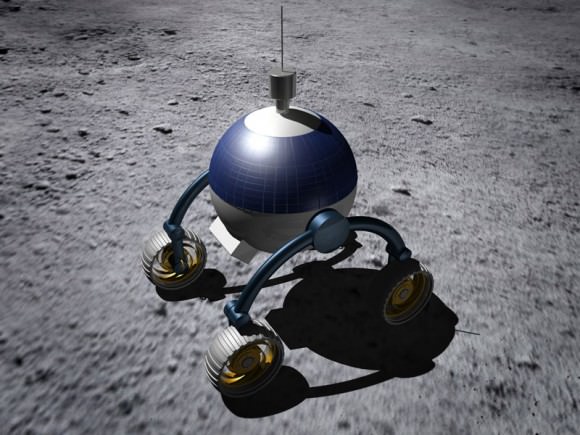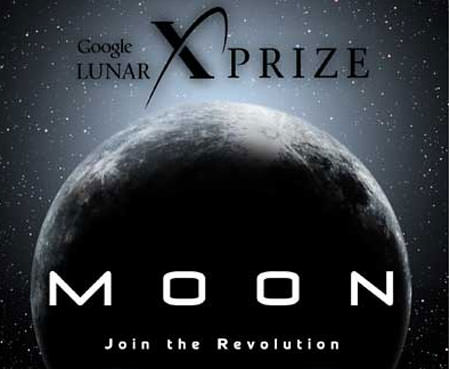At the end of the movie “Apollo 13,” when the character of Jim Lovell says “I look up at the Moon and wonder, when will we be going back, and who will that be?” he probably didn’t have anything like the Google Lunar X PRIZE in mind. Similarly, when the GLXP was announced back in 2007, the founders had no idea that nearly 30 teams would be vying for the $30 million in incentive prizes to return to the Moon’s surface with a robotic craft.
Will Pomerantz, the former Senior Director of Space Prizes from the X PRIZE Foundation recalled an advisory committee meeting several years ago before the prize was announced. “We went around the room and asked everyone to estimate how many teams are going to compete in this,” Pomerantz said. “The answers ranged from zero on the low end to maybe a dozen or fifteen at the absolute max and that probably came either for myself or from Peter Diamandis, our founder. The fact that we have almost thirty blows us away, and we couldn’t be more thrilled.”
The X PRIZE Foundation recently announced the official roster of 29 teams that will attempt to send a robot to the Moon that travels at least 500 meters and transmit video, images, and data back to the Earth. The organization says this signifies a “new era of exploration’s diverse and participatory nature.”
The teams are headquartered all over the world — seventeen different headquarter nations — and most of the teams are actually multinationals, so team members are working in almost seventy different countries on every continent except for Antarctica.
“This is going to be the first time anything has been on the lunar surface since the final Soviet robotic mission in 1976,” Pomerantz said and those of us in the states really haven’t seen any data directly from the lunar surface since 1972, so we think that there’s at a ton to be learned scientifically, but also there’s a huge inspirational factor there for people to be able to see those images again.”
Of course, the robotic missions being designed are much less complicated and expensive than a human mission to the Moon.

The concepts range from snake-like robots that slither along the surface to ball-shaped vehicles that can shift their mass internally move along the lunar surface to small robotic vehicles – “not too much bigger than the cell phone you’ve got your pocket,” Pomeranzt said – to rovers that look very much NASA- or ESA-designed vehicles. Others won’t rove at all, but reignite their engines to take off and fly to another location. This may allow them to explore totally different types of terrain that is totally inaccessible to a rover.
The landing sites that the various teams are shooting for differ as well. “Essentially everyone is going on the near side for obvious communication reasons,” Pomerantz said. “Almost everyone is going in a fairly low latitude and going in the equatorial zones.”
There are bonus prizes of several million additional dollars for teams that can go to particular sites, such the South Pole, where they could possibly confirm the findings at the LCROSS impact site, or if they go back to visit one of the Apollo landing sites or one of the sites of a non-human mission.
“I know that causes some concern for some people,” Pomerantz said. “People very rightly want to make sure that we are being respectful of those treasured historical sites. But I think it is important to recognize that no one values those sites more than the men and women around the world who are dedicating their careers to getting back to the surface of the Moon. They absolutely understand that those are our valuable treasures that need to be respected but they also understand that there’s an enormous amount to be gained from going back and respectfully revisiting the. There is some very interesting science that we can do by going back and seeing how the site and how those materials have changed over the past forty years.”
Why offer a prize to return to the Moon?
“We want to open the space frontier in the way similar to what we did it for the first X PRZE, the Ansari X PRIZE,” Pomerantz said. “We want to make space exploration and lunar exploration in particular radically cheaper. We think when you create a much lower price point, when you bring the price of missions down to a tenth to what it historically has been or even a hundredth of what it historically has been, you’re opening it up to a huge variety of new customers, new science communities, new industries that just can’t exist at the current price points.”
All the teams have to come up with their own funding.
“This is really a cash on delivery kind of model,” Pomerantz said. “But we don’t want to pay people to try. There are enough other people out there that are funding people to try new things. We want to reward people upon success. That means that no matter how crazy an idea might seem today, if it happens to be the best one, then we’ll reward it.”
Right now, the prize money is set to expire by the end of 2015, but the GLXP organizers are quite confident that at least one of the 29 teams will successfully reach the Moon before then. And obviously, NASA is confident, as well, as the space agency is offering a program called the Innovative Lunar Demonstration and Data Program, which is essentially $30 million dollars worth of data purchases from commercial efforts that reach the Moon.
“This is NASA saying for first time ever we are able to buy data about conducting lunar missions and about the Moon itself, rather than having to go out and pay for the acquisition of that data directly on the hopes that it will work,” Pomerantz said. “This is a great buy for NASA and I think they are getting a tremendous value and is a great way for teams to show their investors and supporters that, hey we’ve got a willing customer here. And NASA is not afraid of us; this isn’t an ‘us versus them competition.’ This is an area where our success is their success and vice versa.
Pomerantz is leaving the X PRIZE Foundation to begin work with Virgin Galactic. “I’ve loved every minute of being with the X PRIZE, but this was an opportunity just too good to pass up and I’m extremely excited about it even though I’m sad to be leaving X PRIZE.”
For more information about GLXP, see their website. See the complete roster of competing teams here.
Listen to an interview with Pomerantz on the 365 Days of Astronomy website.


Visiting the apollo landing sites to check out the materials how they changed would be great. And I want it live in Full HD, preferably in 3D!
Or, as Apollo 12 itself did, visit and return portions of landers* that have been there even before humans were…
* Or machines that failed to, or were never meant to land intact. Saturn S-IVB stages would be especially interesting, if even recognizable.
Saturn S-IVB stages would be very good location too!
The impact surely generated an interesting debris field.
It was really nice of the people at SpaceX to throw in a substantially discounted F9 launch vehicle for GLXP competitors ready for a late 2013 Moon shot. The Astrobotic Tech. entry has signed so far and hopefully more to follow.